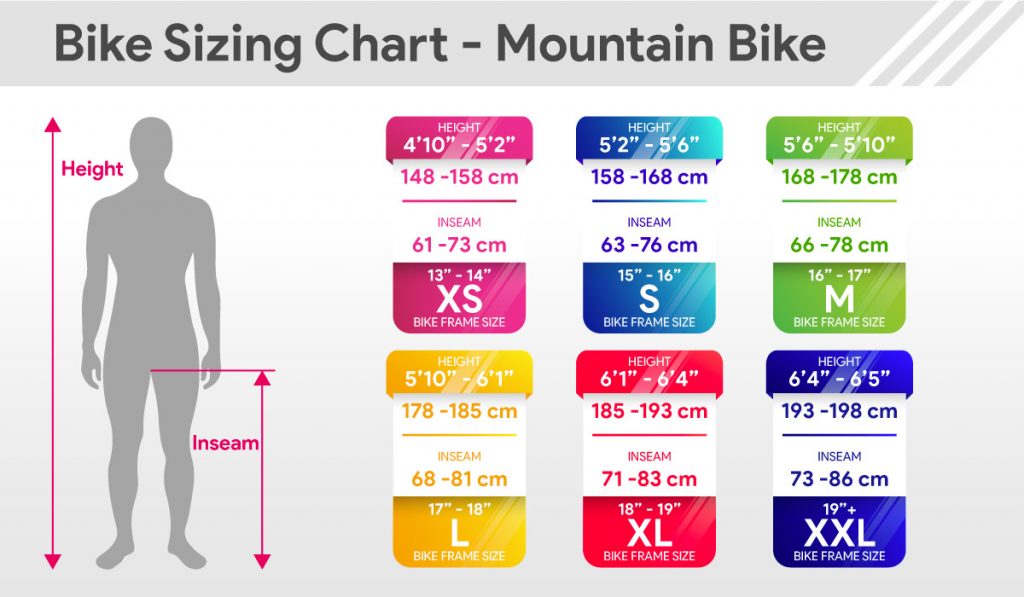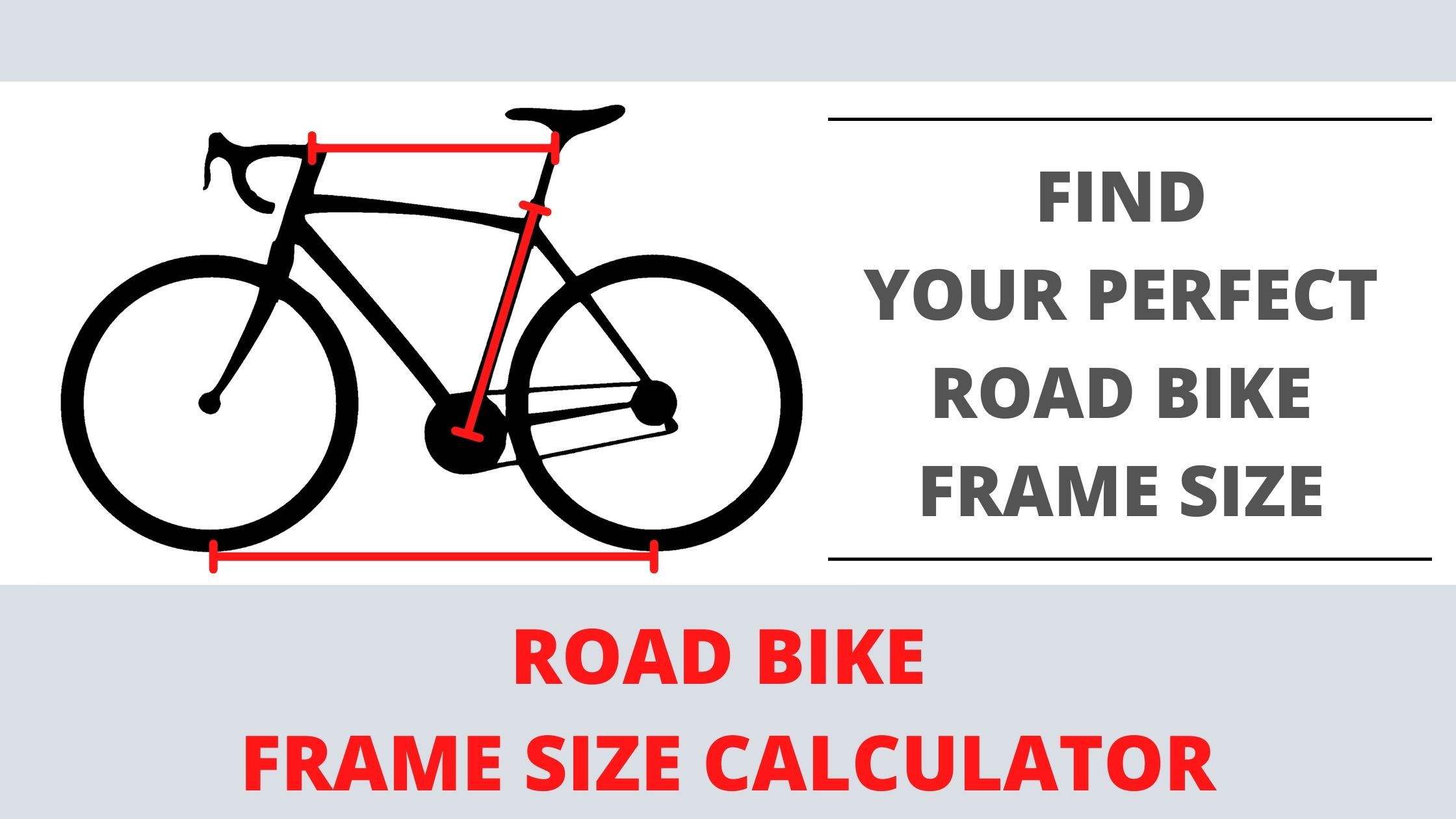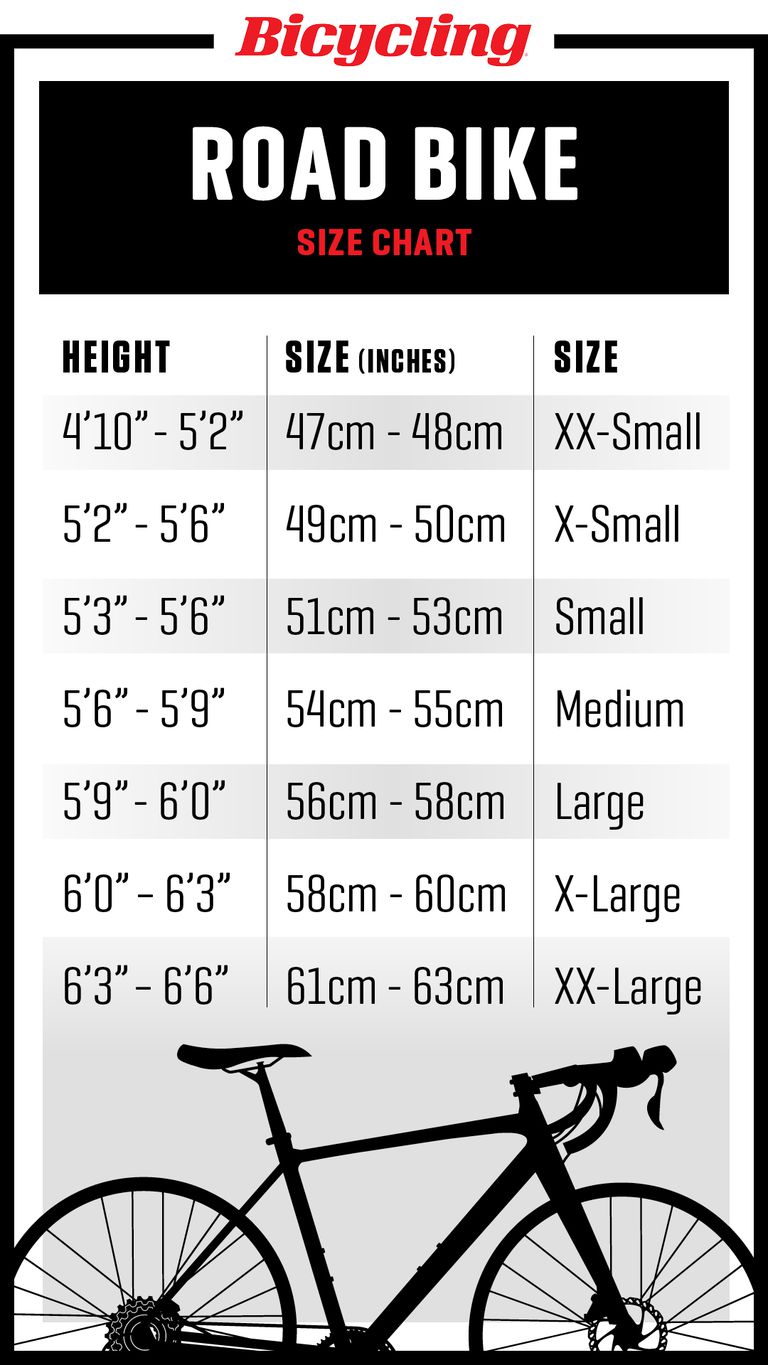Understanding the Size of Road Bikes: A Crucial Factor for Comfort and Performance
Selecting the right size road bike is paramount for cycling comfort, efficiency, and safety. An ill-fitting bike can lead to various issues, such as back pain, knee problems, and reduced control, negatively impacting your overall cycling experience. The size of a road bike encompasses several factors, including frame size, saddle height, handlebar reach, and more. A proper bike fit ensures that these components align with your body dimensions and proportions, allowing you to maintain a natural and efficient pedaling position.
How to Measure Yourself for a Road Bike: A Step-by-Step Guide
To ensure a comfortable and efficient road bike fit, accurate measurements of your body dimensions are essential. Follow these steps to measure yourself for a road bike:
- Inseam length: Stand against a wall with your feet about 6 inches apart. Place a hardcover book or a ruler between your legs, pressing it into your crotch. Make sure the book or ruler is level and mark the wall at the top edge. Measure the distance from the floor to the mark. This is your inseam length.
- Arm length: Stand straight with your arms extended to your sides. Have a friend measure the distance from the tip of your middle finger to the AC joint (the bony bump at the top of your shoulder).
- Torso height: While sitting on a chair, measure the distance from the seat to the top of your head. Make sure the chair is of a similar height to the saddle of your road bike.
When taking measurements, use a metal tape measure for accuracy. It’s also helpful to have someone else assist you to ensure the most precise results. For added convenience, you can use a smartphone app or a dedicated bike fitting tool to simplify the measurement process.
Road Bike Size Charts: Making Sense of Frame Sizes and Geometry
Various road bike size charts are available, focusing on frame size and geometry. These charts help you determine the appropriate bike size based on your body measurements and cycling preferences. When interpreting road bike size charts, consider the following factors:
- Frame size: This is the distance from the center of the bottom bracket to the top of the seat tube, measured in centimeters (cm) or inches (in). Common frame sizes range from 44 to 64 cm or 17 to 25 in.
- Stack: Stack refers to the vertical distance from the center of the bottom bracket to the top of the head tube, indicating the bike’s cockpit height. A higher stack value implies a more upright riding position.
- Reach: Reach is the horizontal distance from the center of the bottom bracket to the top of the head tube, along the bike’s length. A longer reach results in a more stretched-out riding position.
- Wheelbase: Wheelbase is the distance between the front and rear dropouts, affecting the bike’s stability and handling. Longer wheelbases provide better stability, while shorter wheelbases enhance maneuverability.
Keep in mind that different manufacturers may have unique sizing conventions. For instance, Specialized uses a size range of 44 to 61 cm, while Trek’s sizes span 45 to 62 cm. Giant’s road bike sizes range from 44 to 63 cm, and Cannondale’s sizes extend from 48 to 63 cm. Always consult the specific size chart provided by the manufacturer to ensure accurate sizing.
Popular Road Bike Brands and Their Sizing: A Comparative Analysis
When selecting a road bike, it’s essential to understand the sizing philosophies of popular brands. Here’s a comparative analysis of Specialized, Trek, Giant, and Cannondale:
- Specialized: Specialized uses a size range from 44 to 61 cm, with a focus on rider-first engineering. This approach ensures that each frame size is tailored to the specific rider, optimizing performance and comfort. Specialized also offers a Body Geometry Fit program to help cyclists find their ideal bike fit.
- Trek: Trek’s road bike sizes span from 45 to 62 cm. The brand’s sizing system emphasizes rider comfort and efficiency, with a focus on stack and reach measurements. Trek’s Precision Fit program offers a comprehensive bike fitting service to help cyclists achieve their perfect bike fit.
- Giant: Giant’s road bike sizes range from 44 to 63 cm, with a focus on providing a balanced and comfortable riding position. The brand’s Advanced Composite Technology allows for a lightweight and responsive frame, while the Contact saddle and handlebar system ensures a comfortable and customizable fit.
- Cannondale: Cannondale’s road bike sizes extend from 48 to 63 cm, with a focus on performance and agility. The brand’s BallisTec carbon frames offer a lightweight and stiff platform, while the System Bar handlebar system provides a comfortable and aerodynamic riding position.
While each brand has its unique sizing philosophy, understanding the key factors that contribute to a proper bike fit, such as stack, reach, and wheelbase, is crucial. These variations in sizing philosophies can significantly impact rider comfort and performance. Choosing a road bike from a reputable brand with a comprehensive bike fitting service can help ensure a comfortable and efficient riding experience.
Road Bike Sizing for Women: Addressing Unique Considerations
Women often have different body compositions and proportions compared to men, necessitating unique considerations when selecting a road bike size. Major manufacturers, such as Specialized, Trek, Giant, and Cannondale, offer women-specific road bikes or sizing recommendations tailored to female cyclists.
- Specialized: Specialized offers a women’s road bike line called Amira, designed with a female-specific geometry. The brand’s size range for women extends from 44 to 57 cm, with a focus on a lower standover height and a shorter reach to accommodate women’s average proportions.
- Trek: Trek’s women’s road bikes, such as the Domane and Emonda, feature a women’s-specific geometry, with a shorter top tube and a more upright riding position. Trek’s women’s size range spans from 44 to 56 cm.
- Giant: Giant’s women’s road bikes, like the Avail, come with a women’s-specific geometry and components, such as narrower handlebars and women’s saddles. Giant’s women’s size range extends from 44 to 57 cm.
- Cannondale: Cannondale’s women’s road bikes, such as the Synapse and CAADX, are available in a women’s-specific geometry, with a shorter top tube and a more upright riding position. Cannondale’s women’s size range stretches from 48 to 57 cm.
When selecting a road bike, women should consider factors such as stack, reach, and wheelbase, just like men. Consulting the specific sizing charts and recommendations provided by manufacturers catering to female cyclists can help ensure a comfortable and efficient riding experience.
Customizing Your Road Bike Fit: Adjusting Saddle Height, Handlebar Reach, and More
A properly fitted road bike can significantly enhance your cycling experience, ensuring optimal comfort, efficiency, and performance. Here are some key adjustments to fine-tune your road bike’s fit:
- Saddle height: To set your saddle height, place your heel on the pedal with the crank arm at the bottom of the stroke. Your leg should be almost straight, with a slight bend in your knee. This position ensures a comfortable and efficient pedaling motion when your heel is in a natural position. Measure the distance from the center of the bottom bracket to the top of the saddle for consistency when changing saddles or bikes.
- Handlebar reach: Handlebar reach refers to the distance from the saddle to the handlebars. To adjust handlebar reach, consider changing the stem length or angle, or swapping out the handlebar for one with a different width or shape. A proper handlebar reach allows for a comfortable and sustainable upper body position, reducing strain on your neck, shoulders, and back.
- Handlebar height: Handlebar height can impact your bike’s aerodynamics and your overall comfort. Adjusting the handlebar height, either by changing the stem or using spacers, can help achieve a more aggressive or relaxed riding position. A lower handlebar height may improve aerodynamics, while a higher handlebar height can provide a more comfortable and upright riding position.
- Seat angle: The seat angle, or the angle of the saddle relative to the ground, can affect your power transfer and comfort. A neutral seat angle, around 73 to 75 degrees, is suitable for most riders. However, some cyclists may prefer a slightly more forward or backward position to alleviate pressure on sensitive areas or optimize power transfer.
Remember that small adjustments can make a significant difference in your comfort and performance. It’s essential to periodically reassess your bike fit as your body changes or after significant mileage. Working with a professional bike fitter can help ensure a precise and personalized bike fit, maximizing your enjoyment and success on the road.
Road Bike Sizing Myths Debunked: Separating Fact from Fiction
Numerous misconceptions surround road bike sizing, potentially leading to an ill-fitting bike and compromised cycling experience. Here, we debunk some common road bike sizing myths:
- Myth 1: “You should be able to touch the ground with both feet when standing over the bike.” This notion is misleading, as standover height is only one factor in determining the right bike size. A proper bike fit should prioritize a comfortable riding position and efficient pedaling mechanics, rather than the ability to flat-foot the bike.
- Myth 2: “Your leg should be almost straight when pedaling at the bottom of the stroke.” A slight bend in the knee at the bottom of the pedal stroke is ideal, as it ensures proper power transfer and reduces strain on the knee joint. Overextending the leg can lead to discomfort and potential injury.
- Myth 3: “One size fits all.” Bike sizing is highly individualized, taking into account factors such as rider height, inseam length, arm length, and torso height. A universal bike size does not exist, as each rider has unique body proportions and preferences.
- Myth 4: “A larger frame is always better for taller riders.” While taller riders may require larger frames, other factors, such as stack, reach, and wheelbase, are equally important. A frame that is too large or too small can negatively impact comfort, efficiency, and control, regardless of the rider’s height.
By understanding the truth behind these common road bike sizing myths, cyclists can make informed decisions when selecting and fitting their road bikes. A proper bike fit is crucial for optimizing comfort, efficiency, and performance, ensuring a safe and enjoyable cycling experience.
Maintaining Your Road Bike’s Ideal Fit: Periodic Check-ups and Adjustments
A properly fitted road bike is essential for optimal comfort, efficiency, and performance. However, riders’ bodies can change over time due to factors such as aging, injuries, or changes in fitness levels. Regular bike fit check-ups and adjustments are crucial to maintain the ideal fit and ensure continued cycling enjoyment and success.
- Monitor changes in your body: As you continue to ride, pay attention to any discomfort, pain, or changes in your body. Aches and pains may indicate that your bike fit needs adjustment. Regularly reassessing your bike fit can help address these issues before they become significant problems.
- Schedule periodic professional bike fits: Working with a professional bike fitter is an excellent way to ensure a precise and personalized bike fit. These experts can help identify any necessary adjustments and provide guidance on proper bike fit principles. Schedule a professional bike fit at least once a year or whenever you experience significant changes in your body or cycling habits.
- Make minor adjustments yourself: Between professional bike fit sessions, you can make minor adjustments to your bike to maintain its ideal fit. For example, you can fine-tune your saddle height, adjust your handlebar reach, or modify your handlebar height using different stems or spacers. Always make small adjustments and reassess their impact before making further changes.
- Invest in quality components: High-quality components, such as adjustable seatposts, handlebars with varying widths and angles, and stems with different lengths and angles, can help you fine-tune your bike fit. These components offer greater flexibility and customization, allowing you to make subtle adjustments as needed.
By prioritizing periodic bike fit check-ups and adjustments, you can maintain your road bike’s ideal fit, ensuring continued comfort, efficiency, and performance on the road. Regular bike fit maintenance is an investment in your cycling enjoyment and long-term success.







